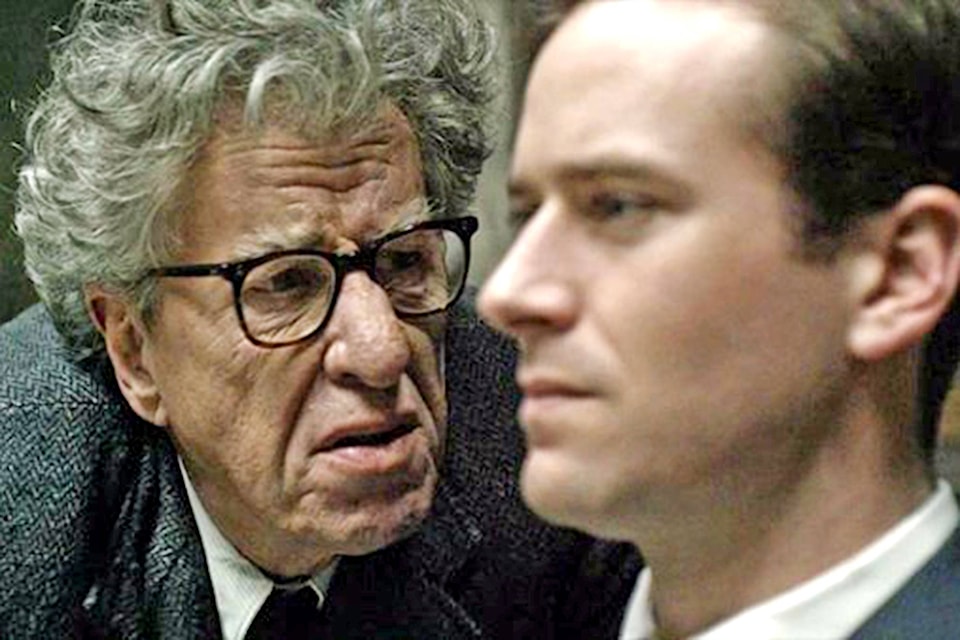American writer James Lord was a chronicler of 20th Century Art and frequently befriended the artists he wrote about.
In Paris, in 1964, while visiting the acclaimed artist Alberto Giacometti, Lord was asked to sit for “a quick portrait sketch on canvas.” He was flattered, but reticent as he was to return to the U.S. the next day. Giacometti assured him it would only take a few hours. Lord ended up posing for 18 days, and rescheduled his flights home many times, until Alberto finally declared that he had a canvas he could “add no more to.” Out of the experience, James Lord wrote a 600 page memoir entitled, A Giacometti Portrait, an account of the creation of the painting. Stanley Tucci’s biopic, Final Portrait, is the adaptation of that memoir.
Much of the movie takes place in Giacometti’s cluttered, ramshackle “compound” in Paris, containing his studio and his living quarters. Except for a few restaurant visits and strolls in the cemetery, the “action” happens in the studio, focused on the torturous process as Giacometti tries to capture the soul of his subject. As Alberto begins, then discards the painting again and again, we see the artist perpetually unsatisfied with his work. His relentless self-doubt puzzles Lord who supposes that Giacometti’s success ought to have erased that. But Alberto agonizes over each brushstroke, and creative compulsion and intensity keep him from finding peace.
During his time modelling, James (and ergo, the audience) becomes privy to the complex relationships Giacometti has with his loyal brother and assistant Diego, his dutiful, very drawn-looking and under-appreciated wife Annette, and Caroline, a local prostitute who is his mistress and apparent muse.
Strong acting makes this an interesting exploration of the artist’s method. Academy Award-winner Geoffrey Rush thoroughly inhabits the role of the gruff and disheveled artist. He provides the melodrama of the tortured genius and injects just the right amount of humour into Giacometti’s frustration. Rush’s posture suggests a lifetime of bending over a canvas, as he shuffles through the clutter beckoning inspiration or cursing its evasiveness, puffing on his ever-present cigarette. Armie Hammer does a fine job as the young American whose patience is tested by the artist’s pressing for “just one more” sitting.
It is the artistic struggle and the mysterious existential nature of it that provides the drama in Final Portrait. Tucci captures the life of an eccentric, self-involved artist and says he hopes the audience takes away some understanding of the creative process, specifically this one, and how odd it was. It is a fascinating look at the beauty, frustration, profundity and chaos of the artistic process. The portrait of James Lord that this film depicts is among the best known of Giacometti’s works on canvas. It is in a private collection.
Final Portrait plays at 5 p.m. on Saturday, May 5 at the Salmar Classic.
For those who missed the Shuswap Film Society presentation of Indian Horse, the Salmar Classic is bringing it back to run Friday, May 4 to Thursday, May 10. Show time is 7:30 p.m.
